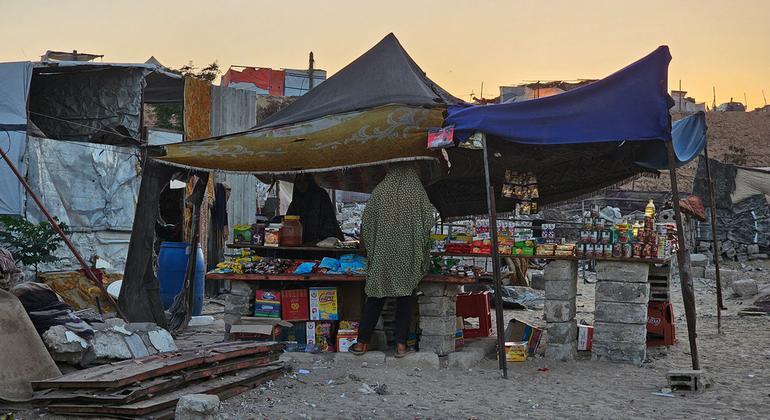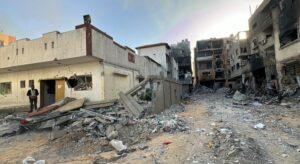In an update, the United Nations aid coordination office, OCHA, highlighted that attacks against civilian infrastructure have not stopped, “particularly in northern Gaza, where the United Nations World Health Organization (WHO) reports appalling conditions at Kamal Adwan Hospital – and where 61 of the 95 attacks on school buildings have taken place since October 6, 2024.”
Floods have already damaged makeshift shelters across the Gaza Strip, but humanitarian teams were only able to provide assistance to 285,000 people for repairs between September and the end of November, as deliveries of materials to the The enclave remains very limited.
“At least another 945,000 people now need urgent winterization assistance to protect them from rain and cold,” OCHA said, noting that “Outside Gaza, 58,000 closure kits and more than 36,000 tarpaulins have already been purchased to cover the needs of around 400,000 people.but it would take two months to deliver them at the current rate of 10 shelter trucks entering Gaza per week.”
Truck Stop
Humanitarian convoys continue to face “extreme insecurity” once inside Gaza, OCHA warned. “On December 11, a convoy of 70 trucks entering through the Kerem Shalom crossing was violently attacked by looters, resulting in the loss of almost all food and humanitarian supplies. The same day, a WFP convoy leaving the Kissufim crossing also came under fire, and four out of five trucks were violently looted.
Humanitarians stressed that such attacks could be avoided, pointing to an agreement last Tuesday with Israeli authorities allowing a U.N. convoy to use the Philadelphia corridor – separating southern Gaza from Egypt – to reach nearly 200 000 people facing serious food shortages.
OCHA reported that between December 1 and 16, out of 339 planned aid operations in the Gaza Strip requiring coordination with Israeli authorities, 30 percent (102) were approved, 42 percent (141) were denied, 18 percent (62) were prevented, and 10 percent (34) were canceled.due to logistical and security issues.
Increased disease
As temperatures drop, the United Nations health agency has reported an increase in infections, including respiratory illnesses, diarrhea and jaundice. In 2024, more than 1.2 million respiratory infections have been recorded, as well as 570,000 cases of acute diarrhea.
These diseases are expected to worsen, especially among children.
UN humanitarians also warned that many displaced people have built shelters on the rubble of destroyed homes in Khan Younis, Ma’an and Bani Suhaila. These structures are fragile and risk collapsing in future rains.
Besieged in northern Gaza
Meanwhile, humanitarian aid to northern Gaza continues to be blocked by the Israeli army, which has been waging a ground offensive since October 6, with reported clashes with Palestinian armed groups.
Despite multiple attempts, UN aid missions in besieged areas such as Beit Lahiya, Beit Hanoun and Jabalia have been “largely refused for more than 10 weeks“, said OCHA.
Immediate action is needed to protect vulnerable populations during winter, humanitarians insist, particularly for women and children who need basic items such as warm clothes, diapers and formula.
A rising balance sheet
Last week, 273 Palestinians were killed and 853 injuredaccording to Palestinian authorities in Gaza. And since war broke out on October 7, 2023 after Hamas-led terrorist attacks in Israel, at least 45,059 Palestinians have been killed and 107,041 injured.
Quoting the Israeli army, OCHA noted that between October 7, 2023 and December 17, 2024, more than 1,586 Israelis and foreign nationals were killed.majority on October 7, 2023 and immediately thereafter. This number includes 386 soldiers killed in Gaza or along the border in Israel and 2,488 injured since the start of the ground operation.
It is an estimated 100 Israelis and foreign nationals remain hostages in Gaza, including those declared dead and whose bodies have not been made public.




